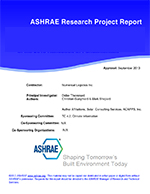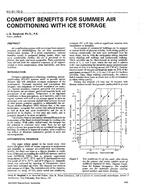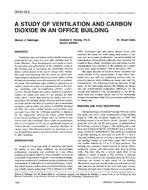This paper presents results from experimental testing and comfort surveys designed to evaluate peak demand-limiting strategies that utilize adjustments of zone temperature setpoints. The testing was performed at a building that is representative of small commercial buildings. In addition, an inverse model was developed to allow extrapolation to ambient and control conditions not encountered during testing. The testing consisted of two phases. During phase 1 two kinds of control strategies were considered: conventional night setup control and a model-based demand-limiting strategy that involved precooling during the morning and nonlinear setpoint adjustments during an afternoon demand-limiting period. The demand-limiting strategy resulted in greater than 30% reductions in peak cooling loads compared to night setup control for a five-hour demand-limiting period. The phase 1 comfort surveys revealed some occupant discomfort in the morning under the demand-limiting control strategy. Therefore, the major objective of phase 2 testing was to investigate less aggressive strategies. In phase 2, comfort conditions were much improved and occupants were generally satisfied with their environment. Furthermore, daily load shifting from the demand-limiting period during the phase 2 tests was similar to that obtained during phase 1. The inverse model was used to extrapolate the study to hotter conditions with similar results for peak load reduction. This study also demonstrated that the shape of the load profile is very sensitive to the shape of the temperature variation during the demand-limiting period. Linear and step changes in setpoints did not result in satisfactory load shapes for minimizing peak demand.
Units: Dual
Citation: Symposium, ASHRAE Transactions, vol. 112, pt. 1
Product Details
- Published:
- 2006
- Number of Pages:
- 13
- File Size:
- 1 file , 7.7 MB
- Product Code(s):
- D-27931


